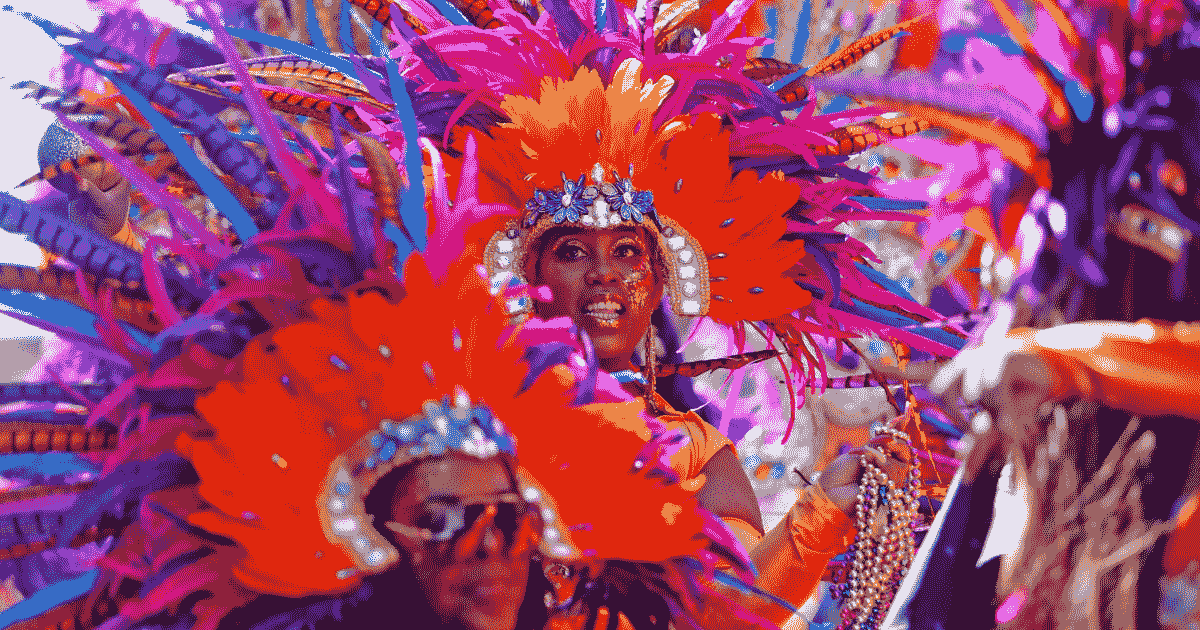Mardi Gras Colors and Carnival Celebrations: A Feast of Colors, Tradition, and Community Spirit
As the sun sets on the eve of Ash Wednesday, cities around the world explode with vibrant colors, infectious music, and elaborate costumes, marking the culmination of Mardi Gras and Carnival celebrations. In 2024, the streets came alive with the most spectacular costumes, echoing the rich traditions and diverse expressions of this secular holiday deeply rooted in Christian and Roman Catholic customs.
Mardi Gras: A Day of Revelry and Tradition
Mardi Gras, French for “Fat Tuesday,” stands as a secular celebration with ties to Christian and Roman Catholic traditions. Falling on the day before Ash Wednesday, it serves as a final day of feasting and revelry before the onset of Lent. For many, like Bethany Kraft from Mobile, Alabama, Mardi Gras is a day to celebrate before the solemnity of repentance begins.
The heart of Mardi Gras beats loudest in New Orleans, home to the nation’s largest and most renowned Carnival celebration. Locals cherish the traditions that transform the city into a kaleidoscope of colors, offering a vital economic boost through the influx of tourists into the vibrant French Quarter.
Carnival: A Global Stage for Expression and Advocacy
Beyond the borders of the United States, Carnival celebrations take on diverse forms, each infused with local culture and, in some instances, serving as platforms for advocacy. In Rio de Janeiro, Carnival dancers paid homage to Brazil’s largest Indigenous group while urging President Luiz Inácio Lula da Silva to address the issue of illegal mining. Carnival in Brazil has long been a stage for samba schools to voice their protests, making use of vibrant costumes and lively performances to convey powerful messages.
Mardi Gras at Elon University: Blending Tradition with Education
Even college campuses like Elon University embraced the spirit of Mardi Gras. Elon, located in North Carolina, celebrated the day with a New Orleans-themed takeover, complete with a special College Coffee event and a lively performance by the Elon Jazz Band. President Connie Ledoux Book, a Louisiana native, found special meaning in bringing the traditions of Fat Tuesday to campus, fostering joy and connection among colleagues and students.
Sarah Dawkins, a student at Elon, expressed her excitement about the jazz band performance, emphasizing her personal connection to jazz through her father’s musical talents. The festivities extended beyond music, with dining halls offering a taste of Louisiana through crawfish specialties, mocktails, and vibrant decorations.
Mardi Gras Beyond Campus: Parades, Festivities, and Culinary Delights
As parades rolled through various cities, the streets overflowed with revelers ready to continue the festivities into the night. In Metairie, Argus rolled at 11 a.m., while in Galveston, thousands gathered for a grand Fat Tuesday finale. Mardi Gras celebrations extended to Houston, where diverse events like The Rustic’s Mardi Craw Party and The Woodlands Children’s Museum Mardi Gras celebration provided a range of experiences for locals.
From live music and crawfish boils to Mardi Gras parades and traditional King Cake, the celebrations offered a diverse array of ways to indulge before the beginning of Lent. The events were not merely about entertainment but also served as opportunities for communities to come together, share in the spirit of Mardi Gras, and create lasting memories.
As the sun set on Fat Tuesday, the echoes of jazz, the vibrancy of costumes, and the flavors of Louisiana lingered, reminding everyone that Mardi Gras is not just a celebration but a communal expression of joy, diversity, and the shared human experience.
FAQs
- What is the significance of Mardi Gras, and why is it celebrated?
Answer: Mardi Gras, French for “Fat Tuesday,” is celebrated as the last day of feasting and revelry before the Christian season of Lent begins. It’s a time for people to indulge in festivities and rich foods before the period of fasting and reflection.
- How does Mardi Gras differ from Carnival?
Answer: While Mardi Gras is specifically the day before Ash Wednesday, marking the end of the Carnival season, Carnival is a broader term encompassing festive events and celebrations that often span several weeks leading up to Lent. Mardi Gras is essentially a part of the larger Carnival festivities.
- What are the key traditions associated with Mardi Gras?
Answer: Mardi Gras traditions vary, but some common elements include vibrant parades, colorful costumes, mask-wearing, music, and indulging in special foods like King Cake. The throwing of beads and other trinkets from parade floats is also a widely embraced tradition.
- How do different cultures contribute to Carnival celebrations?
Answer: Carnival is celebrated globally, and different cultures contribute unique elements to the festivities. For example, in Rio de Janeiro, Brazil, Carnival is known for elaborate samba performances and vibrant costumes, while in New Orleans, USA, jazz music, and intricate masks play a significant role.
- How did Elon University celebrate Mardi Gras in 2024?
Answer: Elon University celebrated Mardi Gras with a New Orleans-themed takeover, featuring a special College Coffee event with jazz music, King Cake, beignets, and bananas fostering doughnut holes. The campus dining halls also served Louisiana-inspired dishes, creating a festive atmosphere for students and staff to enjoy.
Read More >>https://trenditweetz.com/deadpool-3-trailer/
